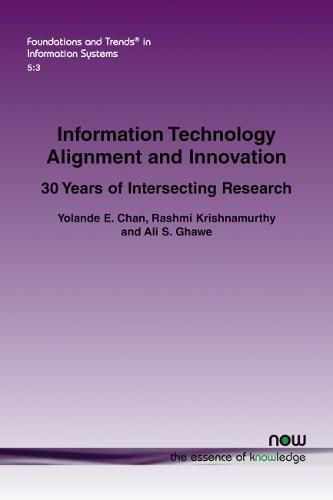Readings Newsletter
Become a Readings Member to make your shopping experience even easier.
Sign in or sign up for free!
You’re not far away from qualifying for FREE standard shipping within Australia
You’ve qualified for FREE standard shipping within Australia
The cart is loading…






This title is printed to order. This book may have been self-published. If so, we cannot guarantee the quality of the content. In the main most books will have gone through the editing process however some may not. We therefore suggest that you be aware of this before ordering this book. If in doubt check either the author or publisher’s details as we are unable to accept any returns unless they are faulty. Please contact us if you have any questions.
Business-IT alignment and information technology-enabled innovation are essential for firm performance and competitive advantage. Over the last 30 years, alignment and innovation literature streams have grown and become important areas of inquiry in the Information Systems field. However, both literature streams have remained separate, and it is unclear where and how the two streams overlap. None of the existing reviews have systematically examined this overlap or how each literature stream informs the other. This monograph bridges this gap and presents findings from a review of the alignment and innovation literature streams published between 1990 and 2020. The authors summarize approaches, challenges, and opportunities seen in the alignment and innovation literature streams. The analysis reveals that alignment scholars tend to overlook the complexities inherent in the process of innovating and view innovation as a black box. Meanwhile, innovation scholars assume different organizational components during the innovation process seamlessly work together to support alignment. The authors conclude that scholars in both camps should consider undertaking studies that examine aligning and innovating as interdependent processes: aligning involves coordination and cooperation among business units, and, in many cases, innovations are needed to achieve alignment. Similarly, innovating with information technology jolts the organization out of its previous alignment and requires aligning in parallel to innovating to restore alignment. Information Technology Alignment and Innovation: 30 Years of Intersecting Research provides guidance to both scholars and practitioners interested in alignment and IT-enabled innovation.
$9.00 standard shipping within Australia
FREE standard shipping within Australia for orders over $100.00
Express & International shipping calculated at checkout
This title is printed to order. This book may have been self-published. If so, we cannot guarantee the quality of the content. In the main most books will have gone through the editing process however some may not. We therefore suggest that you be aware of this before ordering this book. If in doubt check either the author or publisher’s details as we are unable to accept any returns unless they are faulty. Please contact us if you have any questions.
Business-IT alignment and information technology-enabled innovation are essential for firm performance and competitive advantage. Over the last 30 years, alignment and innovation literature streams have grown and become important areas of inquiry in the Information Systems field. However, both literature streams have remained separate, and it is unclear where and how the two streams overlap. None of the existing reviews have systematically examined this overlap or how each literature stream informs the other. This monograph bridges this gap and presents findings from a review of the alignment and innovation literature streams published between 1990 and 2020. The authors summarize approaches, challenges, and opportunities seen in the alignment and innovation literature streams. The analysis reveals that alignment scholars tend to overlook the complexities inherent in the process of innovating and view innovation as a black box. Meanwhile, innovation scholars assume different organizational components during the innovation process seamlessly work together to support alignment. The authors conclude that scholars in both camps should consider undertaking studies that examine aligning and innovating as interdependent processes: aligning involves coordination and cooperation among business units, and, in many cases, innovations are needed to achieve alignment. Similarly, innovating with information technology jolts the organization out of its previous alignment and requires aligning in parallel to innovating to restore alignment. Information Technology Alignment and Innovation: 30 Years of Intersecting Research provides guidance to both scholars and practitioners interested in alignment and IT-enabled innovation.